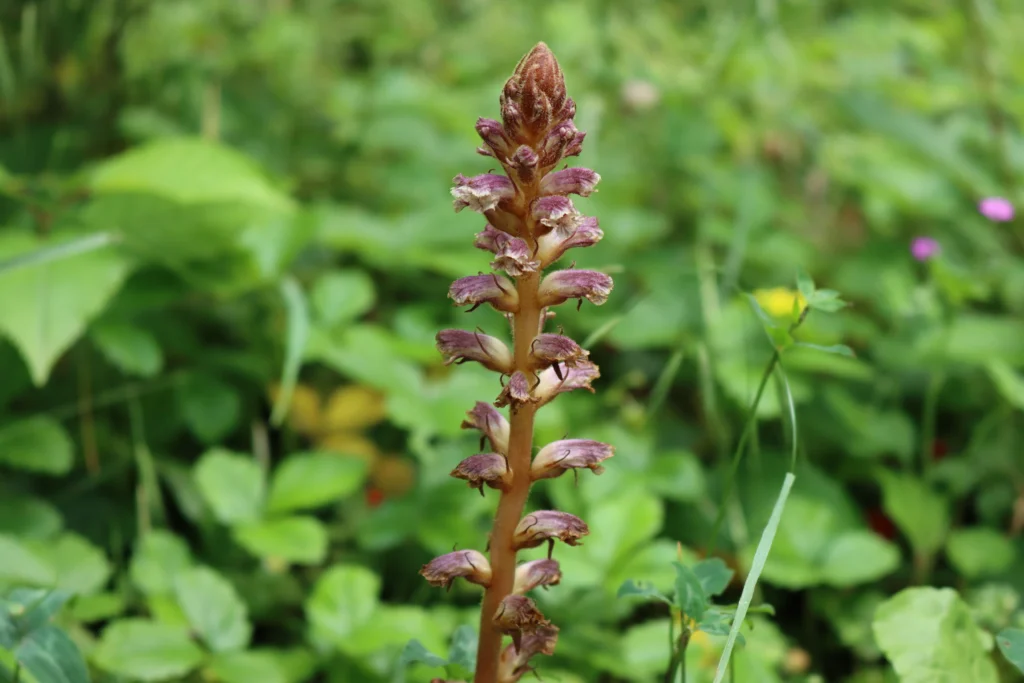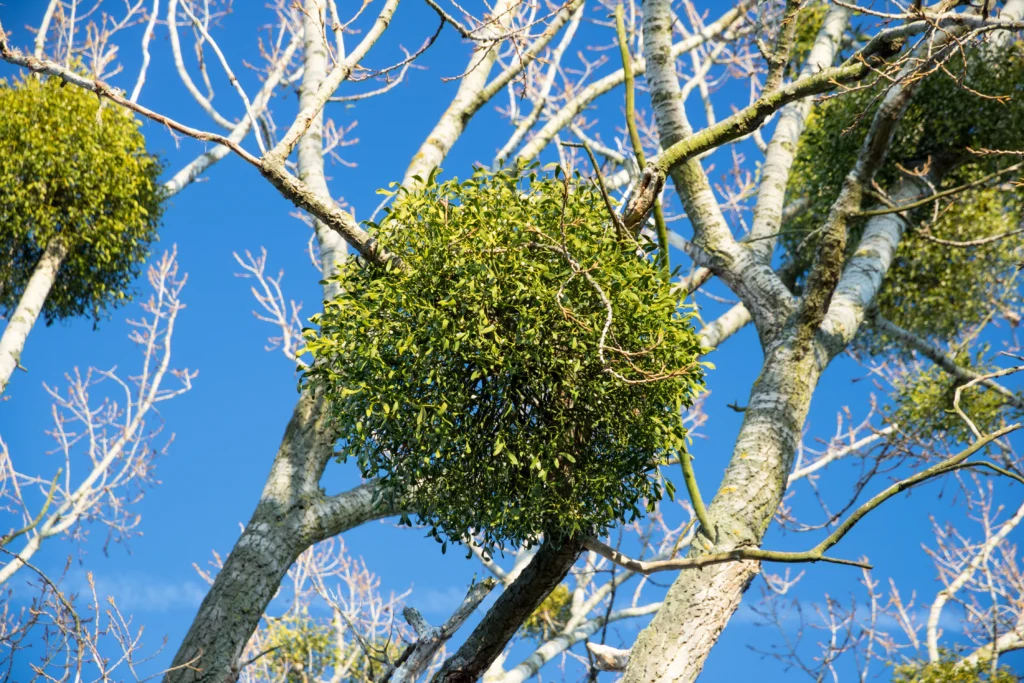
Parasitic plants can pose significant threats to trees, affecting their health and even leading to their demise if not controlled. In this blog, we’ll explore some common parasitic plants you might encounter, how they impact trees, and what steps you can take to manage or eliminate these unwelcome guests from your garden or landscape in Columbia, IL.
Understanding Parasitic Plants
Parasitic plants derive some or all their nutritional requirements from another living plant, known as the host. Unlike most plants that photosynthesize to produce their own food, parasitic plants tap directly into their host’s resources, which can weaken or even kill the host plant.
Common Parasitic Plants
- Mistletoe: Perhaps the most famous of all parasitic plants, mistletoe can be both a quaint holiday tradition and a serious pest. It attaches itself to tree branches, forming dense clusters that siphon off water and nutrients from the host tree. Over time, this can lead to stunted growth and general weakening of the tree.
- Dodder: This leafless and rootless vine is another aggressive parasite. It wraps around its host and inserts structures called haustoria into the bark, through which it extracts nutrients. Dodder can completely envelop its host, blocking sunlight and severely impairing its health.
- Strangler Fig: Starting life as a seemingly harmless seed deposited by birds in the branches of a host tree, the strangler fig sends roots down to the ground and envelops the host tree with its trunk and branches. Over time, it can strangle and outcompete the host tree for sunlight and nutrients, eventually replacing it entirely.
- Broomrape: Lacking chlorophyll, broomrape plants are entirely dependent on their host for nutrition. They connect to the roots of their host trees and other plants, extracting water and nutrients, which can severely affect agricultural crops as well as ornamental plants.

Managing Parasitic Plants
- Early Detection: The best defense against bad plants is early detection. Make sure to check your trees for infection signs regularly. Look for unusual growths, changes in foliage color, or general signs of decline.
- Physical Removal: For some parasites like mistletoe, physically cutting out the infestations can help control their spread. It’s important to remove not just the visible parts but also any underlying structures embedded in the host tree.
- Chemical Treatments: In some cases, chemical treatments might be necessary, especially for pervasive parasites like dodder. Herbicides can be effective, but they must be used cautiously to avoid harming the host tree or surrounding plants.
- Cultural Practices: Promoting the overall health of your trees can reduce the impact of parasitic plants. Proper watering, fertilization, and pruning help keep trees robust and more resistant to pests and diseases.
- Consulting a Professional: When in doubt, it’s advisable to consult with a certified arborist or a tree care specialist around the Columbia, IL area. They can offer tailored advice and treatment options, ensuring the health of your trees and garden.
If you need help protecting your trees from parasitic plants in your yard in Columbia, IL, call Merritt’s Tree Service for reliable services.